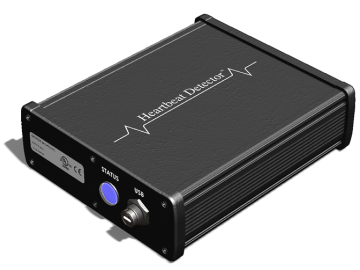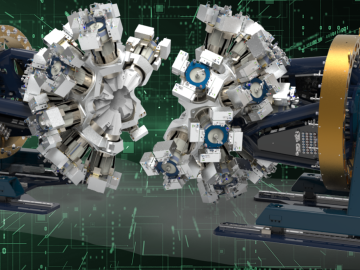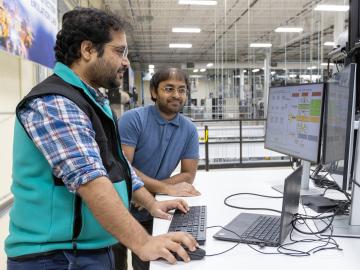
Filter News
Area of Research
Date
News Topics
- 3-D Printing/Advanced Manufacturing (3)
- Advanced Reactors (2)
- Artificial Intelligence (5)
- Big Data (4)
- Biology (1)
- Biomedical (1)
- Buildings (2)
- Computer Science (11)
- Cybersecurity (1)
- Energy Storage (1)
- Exascale Computing (3)
- Frontier (1)
- Grid (2)
- High-Performance Computing (7)
- Machine Learning (3)
- Materials Science (1)
- Mathematics (1)
- Microscopy (1)
- National Security (2)
- Neutron Science (1)
- Nuclear Energy (4)
- Partnerships (1)
- Physics (1)
- Quantum Computing (3)
- Quantum Science (3)
- Security (1)
- Simulation (1)
- Software (1)
- Space Exploration (1)
- Summit (4)
- Transportation (2)
Media Contacts

The Heartbeat Detector, developed at ORNL and licensed by Geovox Security Inc., detects hidden individuals in vehicles by measuring suspension vibrations. Now using a compact black box and cloud software, the system is more affordable and easier to use, while remaining the industry standard worldwide.

Analyzing massive datasets from nuclear physics experiments can take hours or days to process, but researchers are working to radically reduce that time to mere seconds using special software being developed at the Department of Energy’s Lawrence Berkeley and Oak Ridge national laboratories.

Working in collaboration with researchers from Oak Ridge National Laboratory, D-Wave Quantum Inc., a quantum computing systems, software and services provider, has shown its annealing quantum computing prototype has the potential to operate faster than the leading supercomputing systems.

A new cybersecurity software package developed at ORNL is available for licensing. The Vehicle Attack Analysis Framework can emulate attacks on a vehicle’s controller area network, the digital backbone that connects a vehicle’s separate computers.

The Department of Energy’s Quantum Computing User Program, or QCUP, is releasing a Request for Information to gather input from all relevant parties on the current and upcoming availability of quantum computing resources, conventions for measuring, tracking, and forecasting quantum computing performance, and methods for engaging with the diversity of stakeholders in the quantum computing community. Responses received to the RFI will inform QCUP on both immediate and near-term availability of hardware, software tools and user engagement opportunities in the field of quantum computing.

ORNL researchers Zhili Feng and Jian Chen in the Materials Science and Technology Division at the ORNL, will receive the Elmer L. Hann Award at the Society of Naval Architects and Maritime Engineers Convention. This award honors their innovative work on a user-friendly software tool that can quickly analyze and determine the best order for performing welds on ship structures.

The Quantum Computing User Forum welcomed attendees for a dynamic event at ORNL. The annual user meeting brought the cohort together to highlight results and discuss common practices in the development of applications and software for quantum computing systems.
Joe Tuccillo, a human geography research scientist, leads the UrbanPop project that uses census data to create synthetic populations. Using a Python software suite called Likeness on ORNL’s high-performance computers, Tuccillo’s team generates a population with individual ‘agents’ designed to represent people that interact with other agents, facilities and services in a simulated neighborhood.

Power companies and electric grid developers turn to simulation tools as they attempt to understand how modern equipment will be affected by rapidly unfolding events in a complex grid.

Researchers at ORNL have developed the first additive manufacturing slicing computer application to simultaneously speed and simplify digital conversion of accurate, large-format three-dimensional parts in a factory production setting.


